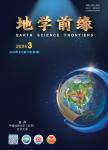CHRONOSTRATIGRAPHY,SEDIMENTATION AND EVOLUTION OF THE XIGAZE FOREARC BASIN: IMPLICATIONS FOR DYNAMIC EVOLUTION OF THE YARLUNG ZANGBO SUTURE ZONE
CHRONOSTRATIGRAPHY,SEDIMENTATION AND EVOLUTION OF THE XIGAZE FOREARC BASIN: IMPLICATIONS FOR DYNAMIC EVOLUTION OF THE YARLUNG ZANGBO SUTURE ZONE出 版 物:《地学前缘》 (Earth Science Frontiers)
年 卷 期:2000年第7卷第S1期
页 面:106-107页
核心收录:
学科分类:0709[理学-地质学] 081803[工学-地质工程] 07[理学] 08[工学] 0818[工学-地质资源与地质工程]
主 题:submarine fan Xigaze forearc basin Yarlung Zangbo Suture Zon e
摘 要:The Yarlung Zangbo Suture Zone (YZSZ), a major lineament in Tibet geological framework, which is accepted as the collision site between India and Asia (Allègre et al., 1984; Coulon et al., 1986; Dewey et al., 1990; Yin et al., 1994), is an extremely complicated tectonic zone. It includes seven different tectonic\|sedimentary units from north to south as follows: Gangdese arc complex keeping the Sangri Group inside, the Qiuwu Formation, the Giabulin Formation, the Xigaze Group, ophiolitic massifs, the Liuqu Group, and melange zones (Wang et al., 1999). Current models, which mainly focus on researches at the unit of ophiolitic massifs, propose that most of the Tethyan oceanic lithosphere was subducted into one single subduction zone active during the Middle Cretaceous or the Late Cretaceous, and closed during the Paleogene India\|Asia collision. In this report, we present latest research results on units in the Xigaze forearc basin and others in YZSZ after 6\|year\|period of comprehensive investigations. Chronostratigraphy framework, sedimentology, and evolution of the Xigaze forearc basin are discussed in details. Four thrust systems in YZSZ are named. Dynamic evolution of the YZSZ including two subductions of Tethys is presented.



